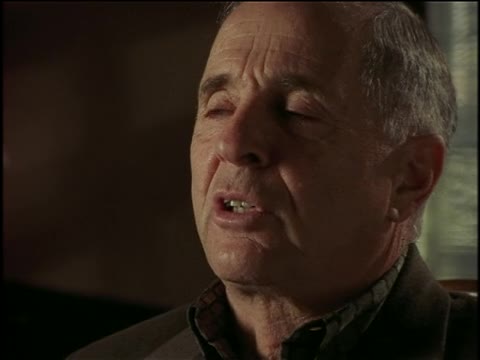NOVA; To the Moon; Interview with William "Bill" Anders, US Air Force Major general, engineer, astronaut, and Lunar Module Pilot on Apollo 8, part 1 of 3
- Series
- NOVA
- Episode
- To the Moon
- Producing Organization
- WGBH Educational Foundation
- Contributing Organization
- WGBH (Boston, Massachusetts)
- AAPB ID
- cpb-aacip-15-dr2p55fn8n
If you have more information about this item than what is given here, or if you have concerns about this record, we want to know! Contact us, indicating the AAPB ID (cpb-aacip-15-dr2p55fn8n).
- Description
- Program Description
- This remarkably crafted program covers the full range of participants in the Apollo project, from the scientists and engineers who promoted bold ideas about the nature of the Moon and how to get there, to the young geologists who chose the landing sites and helped train the crews, to the astronauts who actually went - not once or twice, but six times, each to a more demanding and interesting location on the Moon's surface. "To The Moon" includes unprecedented footage, rare interviews, and presents a magnificent overview of the history of man and the Moon. To the Moon aired as NOVA episode 2610 in 1999.
- Raw Footage Description
- Bill Anders, engineer, former NASA astronaut on Apollo 8, and retired US Air Force Major General, is interviewed about Anders' role in the Gemini and Apollo programs. Anders describes his assumption of communications during Gemini 8's malfunction, and his role in guiding the spacecraft back to earth; he relates this episode to his role on Apollo 8. Anders ends with a description of Jim Lovell's mistake during Apollo 8, and his thoughts on the Apollo 1 fire and the astronauts' acceptance of risk.
- Created Date
- 1998
- Asset type
- Raw Footage
- Genres
- Interview
- Topics
- History
- Technology
- Science
- Subjects
- American History; Gemini; apollo; moon; Space; astronaut
- Media type
- Moving Image
- Duration
- 00:13:40
- Credits
-
-
Interviewee: Anders, William, 1933-
Interviewee: Anders, William, 1933-
Producing Organization: WGBH Educational Foundation
- AAPB Contributor Holdings
-
WGBH
Identifier: cpb-aacip-c7d9a0a0fea (Filename)
Format: Digital Betacam
Generation: Original
Duration: 0:13:40
If you have a copy of this asset and would like us to add it to our catalog, please contact us.
- Citations
- Chicago: “NOVA; To the Moon; Interview with William "Bill" Anders, US Air Force Major general, engineer, astronaut, and Lunar Module Pilot on Apollo 8, part 1 of 3 ,” 1998, WGBH, American Archive of Public Broadcasting (GBH and the Library of Congress), Boston, MA and Washington, DC, accessed December 6, 2025, http://americanarchive.org/catalog/cpb-aacip-15-dr2p55fn8n.
- MLA: “NOVA; To the Moon; Interview with William "Bill" Anders, US Air Force Major general, engineer, astronaut, and Lunar Module Pilot on Apollo 8, part 1 of 3 .” 1998. WGBH, American Archive of Public Broadcasting (GBH and the Library of Congress), Boston, MA and Washington, DC. Web. December 6, 2025. <http://americanarchive.org/catalog/cpb-aacip-15-dr2p55fn8n>.
- APA: NOVA; To the Moon; Interview with William "Bill" Anders, US Air Force Major general, engineer, astronaut, and Lunar Module Pilot on Apollo 8, part 1 of 3 . Boston, MA: WGBH, American Archive of Public Broadcasting (GBH and the Library of Congress), Boston, MA and Washington, DC. Retrieved from http://americanarchive.org/catalog/cpb-aacip-15-dr2p55fn8n
